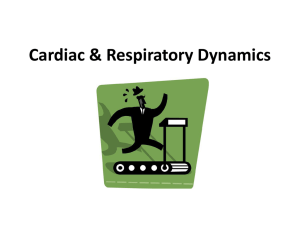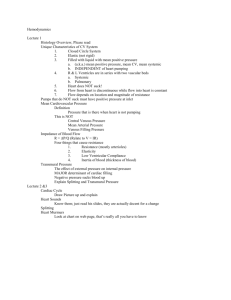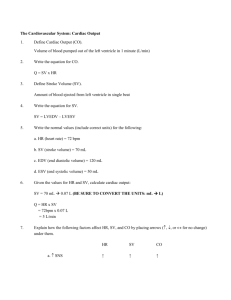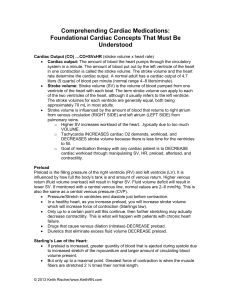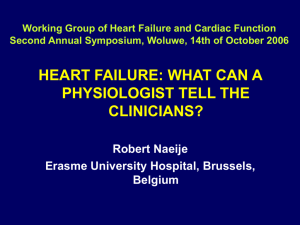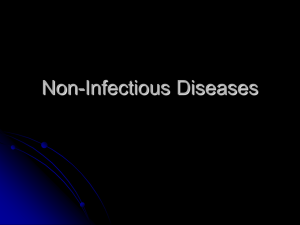Bios 1310 SI Week 6 Session 2 If a patient has an end systolic
advertisement
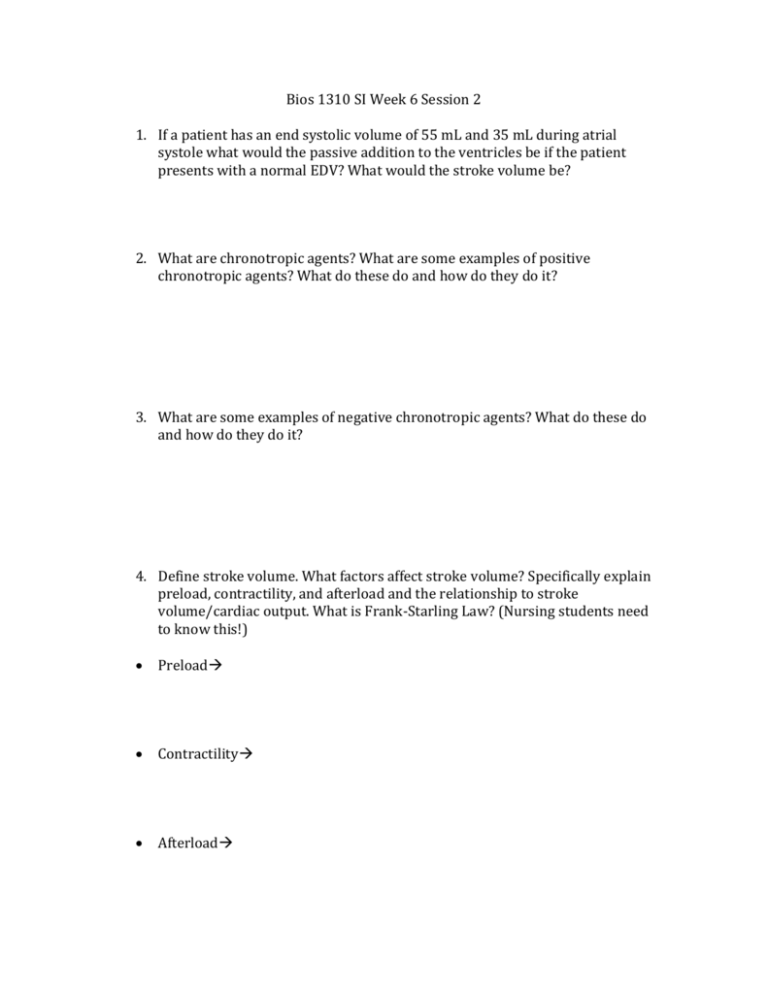
Bios 1310 SI Week 6 Session 2 1. If a patient has an end systolic volume of 55 mL and 35 mL during atrial systole what would the passive addition to the ventricles be if the patient presents with a normal EDV? What would the stroke volume be? 2. What are chronotropic agents? What are some examples of positive chronotropic agents? What do these do and how do they do it? 3. What are some examples of negative chronotropic agents? What do these do and how do they do it? 4. Define stroke volume. What factors affect stroke volume? Specifically explain preload, contractility, and afterload and the relationship to stroke volume/cardiac output. What is Frank-Starling Law? (Nursing students need to know this!) Preload Contractility Afterload Increased preload will _________________ stroke volume, therefore ______________ cardiac output. Increased contractility will _______________ stroke volume, therefore _______________ cardiac output. Increased afterload will ________________ stroke volume, therefore _________________ cardiac output. 5. Explain the different classes of blood vessels. Fill in the following…. Arteries ________________ _______________ ________________ ___________________ 6. Explain vasoconstriction and vasodilation. What controls this? 7. Describe elastic arteries, muscular arteries, and resistance arteries. What are the arterial sense organs? What is an aneurysm? 8. Describe continuous capillaries, fenestrated capillaries, and sinusoids. What are capillary beds (explain thoroughfare channels and true capillaries). It may help to draw a picture like in lecture. Challenge Question: What are varicose veins? How can this be prevented? How is it treated?

